When U2 released its album “Songs of Innocence” with an exclusive iTunes partnership, the band was trying to figure out something a bit more complex than simply reaching as many fans as possible. It was grappling with which side of music history it wanted to fall into: the “stream or die” path of slowly decreasing record sales and pirated downloads or the path to reviving the music industry.
While automatically downloading the album to all iTunes users’ libraries felt a little too “Big Brother” for some consumers, it’s a great example of revenue-generating experiments on the horizon. As piracy and streaming continue to cut into artists’ revenues, bands and record labels are actively upping their game to encourage fans to purchase more music, goods, and experiences.
 Few artists are likely to follow in U2’s footsteps with the same strategy after the backlash from iTunes users, but when a challenge emerges in the market, we can always look to Apple to lead with the most creative solutions. The “Songs of Innocence” maneuver was Apple showing its hand: The solution to diminishing music sales could be an interactive digital music approach.
Few artists are likely to follow in U2’s footsteps with the same strategy after the backlash from iTunes users, but when a challenge emerges in the market, we can always look to Apple to lead with the most creative solutions. The “Songs of Innocence” maneuver was Apple showing its hand: The solution to diminishing music sales could be an interactive digital music approach.
How Innovation Shaped the Music Industry’s Path.
Fans crave a sense of being closer to the artist, and even 20 years ago, Apple was involved in making this happen. During my years at Apple, my good friend Ty Roberts of Gracenote had created something called the enhanced CD, which created the same types of immersive artist-to-fan experiences for the CD (years ahead of the digital online music curve).
For more than 25 years, Apple has been a leading innovator in the way bands make, market, and distribute music. During my tenure driving music initiatives at Apple, I spent a fair amount of time encouraging artists to use Macintosh (coupled with software such as Pro Tools) as a partner in liberating their music-creation process from expensive recording studios. For the first time, artists could write, record, and mix their music from their own home studios at their leisure.
The digital landscape subsequently changed the industry forever. The 2001 introduction of the iPod and the launch of iTunes in 2003 were seismic shifts. But when songs first became available in MP3 format, pirating software such as Napster and BitTorrent took over, costing the music industry billions in illegally downloaded songs every year. To be fair, both services attempted to demonstrate to record labels how they could monetize the many millions of users who were accessing songs through these torrents — but those efforts fell on deaf ears back then.
This demand for free media led to the development of streaming music options such as Spotify and Rdio. While access to artists is at an all-time high (a pro for consumers and smaller bands), the sweeping popularity of these applications deprives established artists of fair compensation. Streaming music has its share of detractors, including Taylor Swift and Radiohead’s Thom Yorke. These big-name naysayers choose to ride a new wave of marketing and distribution that will protect their hard-earned income: the creation of products desirable enough (and personal enough) to coax fans into paying.
How Interactivity Feeds the Artist and the Fan
Interactive digital music is one attempt at recapturing these lost music dollars. Rather than downloading individual songs (legally or illegally), interactive albums give fans access to a rich, immersive visual and audio experience with add-ons they can’t get from a streaming service, such as photography, interactive lyrics, and fan remixes.
Then, these interactive downloads can be woven into an artist-focused app that organizes each artist’s concerts, brand partnerships, merchandise, and product offerings into one place and sends revenue straight to the artist — instead of to the other players in the music ecosystem.
Interactive digital music is a perfect extension of Apple’s philosophy because it allows musicians to embrace their creativity and recapture some of what made physical albums special. It’s a flashback to a time when artists had the resources to care about the presentation of the artwork, write long-form albums on specific themes, and design a rich and powerful artist-to-fan experience.
Although we can sense hunger from fans for more of this engagement, we don’t yet know how much money they’re willing to pay for these types of experiences or how they’ll actually embrace these opportunities. One of the most important aspects of developing any new product is deciding whether it meets the needs and desires of consumers. But as Apple has proven time and again, consumers often don’t know they want something until it’s presented for them to try.
Like anything in marketing, interactive digital music is an evolving experiment. But as long as companies dabbling in this arena avoid a fiasco like Sony’s ill-fated anti-copy rootkit technology, there aren’t a whole lot of foreseeable downsides. Apple has the perfect opportunity to capitalize on the growing interest of artists, fans, and its own products that can deliver this new immersive experience.
The music industry has always been about more than sounding good and getting a record deal. But today, artists have to give more than ever just to get what they got in the past. Artists who want to recoup lost sales and protect their livelihood from piracy must be willing to try new things — and surprise and delight fans with engaging, cutting-edge, interactive experiences.
This article was first published on Innovation Insights.
To your best success,
Kelli Richards, CEO of the All Access Group, LLC
PS: Subscribe to my FREE All Access Group Newsletter https://bit.ly/AAGNewletter
PSS: Listen to an entire library of intimate discussions with industry visionaries https://bit.ly/AllAccessPodcastSeries (Priceless)



